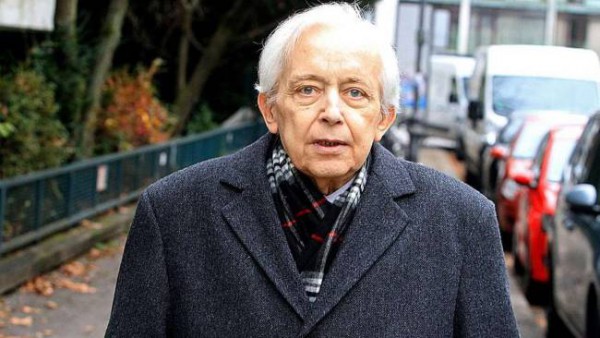
Switzerland’s Kunstmuseum Bern (Museum of Fine Arts Bern) will accept the collection of some 1,300 works bequeathed to it by German collector Cornelius Gurlitt, according to a report in the Swiss newspaper Sonntagszeitung. The report comes ahead of an official announcement scheduled for November 26. The claim has, thus far, been unable to be independently verified by artnet News or other sources.
Both the Bavarian authorities and the Kunstmuseum Bern told Der Bund that a conclusion regarding the museum’s acceptance of the collection had not yet been reached but that negotiations were going smoothly. The museum insisted that it was up to its board to decide whether or not to take the works. That board is scheduled to meet on November 26. According to the Sonntagszeitung, their discussions are not expected to be lengthy and are likely a matter of approving predetermined conditions, as negotiated between the museum leadership and German authorities (see “Swiss Museum’s Decision on Gurlitt Art Trove“).
Citing “well-informed sources,” the Sonntagszeitung report goes into great depth about various contingencies and caveats put in place to accommodate the contentious nature of the works. Known colloquially as the “Munich Art Trove,” the collection was assembled by Cornelius Gurlitt’s father, Hildebrand Gurlitt. The elder Gurlitt was one of four art dealers entrusted with selling so-called degenerate art during the Nazi regime’s rule. The collection includes numerous high-value works by Henri Matisse, Max Liebermann, Otto Dix, and Marc Chagall, among others. Initial estimates that put the trove’s total worth at an excess of €1 billion, have since been revised to significantly lower numbers. Many pieces are believed to have been looted from Jewish families by the Nazis.
According to the report, the Kunstmuseum will not take possession of any work against which there is currently a claim. Around 300 of the 1,300 works have arisen particular suspicion thus far. That is either due to a restitution claim already in place by families or individuals who claim to be the art works’ rightful heirs or due to research already undertaken by the task force assigned by the Bavarian government to research the provenance of the collection’s works. The task force is led by lawyer Ingeborg Berggreen-Merkel.
Detail from Henri Matisse’s Seated Woman/Woman Sitting in Armchair (1921).
Photo: Via Lost Art Koordinierungsstelle Ma.
The task force has already determined that Matisse‘s Seated Woman/Woman Sitting in Armchair (1921) should be returned to the heirs of legendary French art dealer Paul Rosenberg, principally Anne Sinclair (see “Matisse from Gurlitt Trove Once Belonged to Paul Rosenberg“). Max Liebermann’s Two Riders on the Beach (1901) will be returned to New York’s David Toren, the heir of one David Friedman (see “Gurlitt Task Force Sides with Nazi Victim“).
That the Kunstmuseum Bern won’t accept any of the works suspected of having Nazi ties is perhaps unsurprising. More surprising, however, is that all of the works will remain in Germany. A specific reason for the decision was not given. Though, it could suggest that the museum is particularly wary of future restitution claims that could arise against works currently not suspected to be Nazi loot but which may, upon further research, reveal questionable histories. Switzerland’s statutes surrounding restitution are less favorable to the rightful heirs of looted artworks than are Germany’s, especially when works are not known to be Nazi loot at the time of their acceptance by a Swiss institution or purchase by a collector (see “Nazi-Looted Constable Painting Exposes Worrying Gap in Restitution Law“).
The museum will reportedly take one further, proactive step of returning any work to a German institution if the work can be identified as having come from that institution. Those works will officially remain the property of the Kunstmuseum Bern but will be placed on permanent loans to the various German museums. It is reported that a mandatory exhibition of all works from the Gurlitt collection be mounted in Germany as soon as possible.